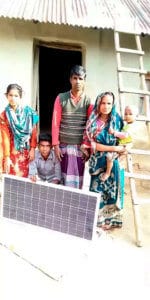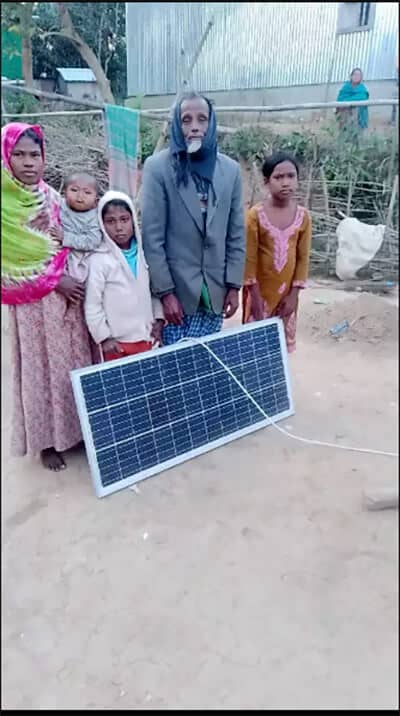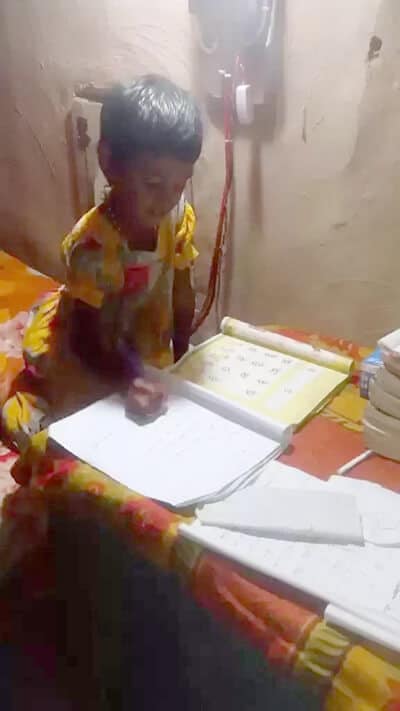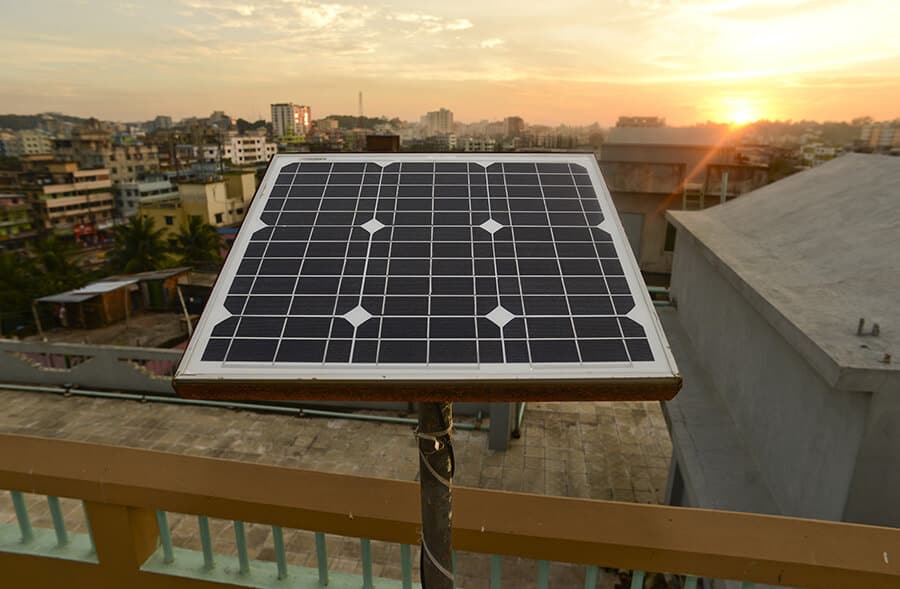You cannot change the whole world, but you can change the world of one person, one family, or one community. In this article, you will learn about Rays4Hope, a young solar energy NGO from Washington D.C. run by high school students. The initiative is on the ambitious mission to provide electricity to as many rural communities in Bangladesh, Ghana, and Madagascar as possible. Within a year of its founding, the NGO has installed 36 solar panels that provide access to education and daily activities after sunset for 36 families. Saif Nasr, the 17-year-old founder of Rays4Hope, shares his journey from one eye-opening encounter with a Moroccan family to running his own solar energy NGO.
Catalyzing the Progress of Developing Nations through Clean Electrification

In July 2019, Saif Nasr had an internship in Morocco at Noor Ouarzazate, the world’s biggest concentrated solar power farm. One of the Noor Ouarzazate projects was to install independent PV solar panels in surrounding villages. This consisted of installing a single panel on the roof of each villager’s house to provide electricity. That’s when Saif saw the relevance of harnessing solar energy potential for rural communities.
“One family had to pay from 15 to 20 US Dollars per month for kerosene oil. They had trouble sending their children to school, because so much money was spent on oil. They couldn’t work in the dark, their children couldn’t study, and all their activities had to be squeezed into the extremely stressful daylight hours”.
It took about a day to install the panel; and after that, the family’s daily routine was transformed. The mother, who was in the textile industry, could knit her cloth at night and care for children during the day.
Electrifying Bangladesh, Ghana, and Madagascar

Saif came back to the US thinking, “Hey, I can do something like this”. He reached out to his uncle, who works in Bangladesh, with an idea to install PV Panels in the villages around the city of Dhaka. According to the World Bank, 85% of the 165 million people in Bangladesh have access to electricity. That’s a 30% increase compared to 2010; however, around 25 million people live without the basics of light.
They looked at the map of the most impoverished areas, particularly those which would have a high solar radiance to maximize the efficiency of the panels. To test the concept, Saif and his uncle installed 2 panels in 2 houses in the Joypur district. Each family got a 275-watt panel, a 1-kilowatt router, and a battery. In Bangladesh, this cost around 400-450 dollars for a family. They also hired local labour to do all the necessary work.
“We said if that works – let’s get this whole village electrified. We interviewed the girl from one of these 2 first houses, and she said she was too scared to get out of bed to get water or to use the restroom at night because there were snakes on the ground. And now she wasn’t afraid”.
After the successful test, he then decided to expand the project by installing 23 more panels in the village. This tremendously helped the village as it brought energy to an impoverished community. The next steps in Bangladesh are to partner with a large organization like the Grameen Bank, which does similar electrification projects, to increase Rays4Hope’s footprint in the region. In addition to Bangladesh, Saif turned his attention to the African nations of Ghana and Madagascar, as he looked to help the widespread need for electrification there. The goal by the end of the year is to install 100 panels: 50 in Bangladesh, 25 in Ghana, and 25 in Madagascar.
More Ideas down the Road

For Saif, the story has been a catalyst for registering his Rays4Hope NGO to help more families like these. He now works with 10 other people, who are also his schoolmates in Washington D.C. The NGO has already installed 36 panels across Bangladesh and Ghana, made possible by private donations from family and friends. The NGO now faces one major challenge.
“We have literally everything – manufacturers, local workers, the need, but we don’t have sponsors. We cannot do more with help from family and friends only. To reach a goal of 100 panels we need the help of larger corporations and non-profit organizations.”
The idea down the road is to run a smart grid – so the house will use only 75% of the power and 25% can be sold to make money. Another ambition is to electrify local schools.
Saif’s young team, however, struggles to get public legitimacy.
“Sometimes people are very skeptical about 16-17 year olds running their own NGO, they don’t take us seriously. We try to change it, because there will never be a shortage of people who don’t have access to electricity, and we have a duty to help people in need. It is not our age that defines us, but our ambitious ideas for electrification.”
The NGO is set to join the 160 members of the Allies for Rural Electrification in the fall.
“We don’t want to just install panels. We want to ease the lives of people so they can achieve what they want to do. We try to make the environment suitable for education – you can’t study when it’s dark.”
“I want to hit home – we take energy for granted. By doing this project I gained such an appreciation for the light. That’s my driver – to give this resource to other people”.
You can support the initiative here.
Title photo: Shutterstock
Photos: Zahed Chowdhury
Read more on solar energy
Support us!
All your donations will be used to pay the magazine’s journalists and to support the ongoing costs of maintaining the site.
Share this post
Interested in co-operating with us?
We are open to co-operation from writers and businesses alike. You can reach us on our email at [email protected]/[email protected] and we will get back to you as quick as we can.









